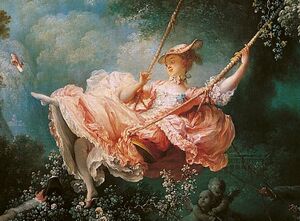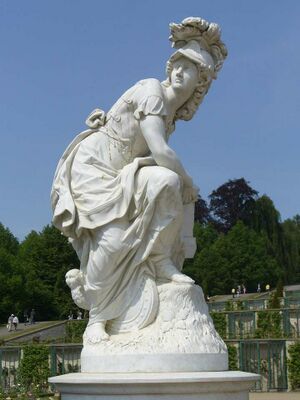Rococco
Rococo is an artistic movement born in France, which developed progressively between the years 1730 and 1760.
The Rococo was born as an art at the service of the aristocracy and the bourgeoisie. It arose as a way of celebrating luxury, comfort and partying as a reflection of the sumptuous and frivolous lifestyle of these social groups. A reaction to the dense and regal style of the Palace of Versailles and Baroque art as a lighter style for decorating palaces and residences of nobles and high bourgeoisie. Three decades later, around 1760, and faced with Voltaire's criticism of the superficiality of this style, Rococo began to decline, being replaced from 1780 by an austere style such as neoclassical
It is characterized by a taste for bright, soft and light colors. Shapes inspired by nature, mythology, the representation of nude bodies, oriental art and especially gallant and loving themes predominate. It is a basically mundane art, without religious influences, that deals with themes of daily life and human relationships, a style that seeks to reflect what is pleasant, refined, exotic and sensual.
Its most outstanding characteristics are lightness, fragility and grace, compared to the profound contents of the Baroque. The most outstanding decorative motif is the rocaille, an asymmetrical element, half vegetable half mineral, which invades architecture and all the decorative arts.
Rococo architecture presents simplicity in the facades while the interiors and gardens are lavishly and extravagantly decorated. For this, very ornate spiral columns, sculptures and everything painted in gold and light colors are used. The walls, ceilings and moldings are also decorated, inspired by natural forms. It is about providing amplitude to the space using mirrors to create it. Decoration such as furniture, porcelain and all kinds of objects are used.
We end this review of the characteristics of Rococo art by talking about the elements of sculpture. They are the following:
One of the characteristics of Rococo sculpture is the predominance of porcelain. Another of the materials used in the sculpture is marble, bronze, iron and wood. It has continuity with the Baroque, although with more delicate compositions, without seeking symmetry. Nudity, sensuality and eroticism abound.
we love the rococo and the art! long live art!
members
Renata Druetta
Candela gonzalez

